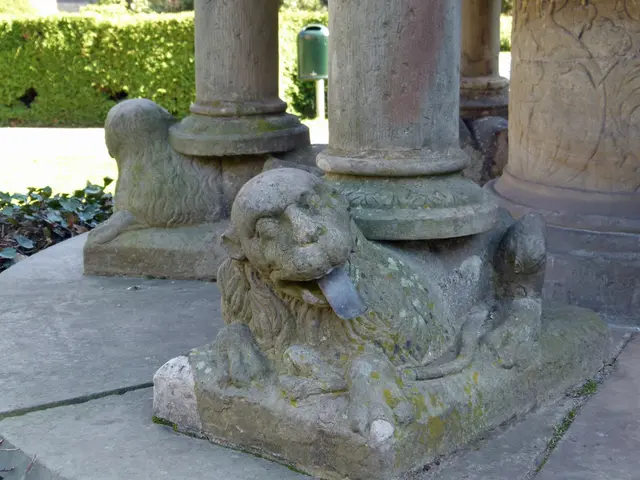Experiencing the natural wonders of Acadia National Park awaits you!
Acadia National Park: A Unique East Coast Gem
Acadia National Park, located on Mount Desert Island along the coast of Maine, USA, is a testament to the power of private conservation efforts and regional history. Established in 1919, it is among the top 20 most visited National Parks, attracting a majority of visitors during the summer and early fall.
The park's origins can be traced back to the early 1900s when private citizens, including George B. Dorr and former President of Harvard University, Charles W. Eliot, began purchasing large tracts of land to prevent development. Their efforts culminated in the creation of Sieur de Monts National Monument in 1916, entirely composed of donated land. This made Acadia the only U.S. National Park established this way.
In 1918, the monument was upgraded to National Park status, initially named Lafayette National Park. However, it was renamed Acadia National Park in 1929 to reflect the region’s French colonial heritage. George B. Dorr, who played a significant role in the park's establishment, became its first custodian.
Acadia National Park has deep ties to indigenous Wabanaki peoples, French settlers from the colonial era of Acadia, and a legacy of artists who popularized the landscape. The island became a popular vacation spot and was drawn to fame partly through the landscapes captured by 19th-century painters from the Hudson River School. Wealthy summer residents, including the Rockefellers, along with conservationist George B. Dorr, donated land to preserve the island’s natural beauty.
The park encompasses 35,000 acres of seacoast, rocks, islands, forest, lakes, and mountains. It extends beyond Mount Desert Island to include parts of the Schoodic Peninsula and Isle au Haut, as well as several smaller islands. Food and supplies are available in nearby towns.
Park lodging is limited to two campgrounds: Blackwoods campgrounds, which takes reservations, and Seawall campgrounds, which is first come first serve. Pets are welcome, but they must always be attended and under physical restraint (max leash length 6 feet). Pets are not allowed on ladder trails, beaches, inside public buildings, or on ranger programs.
Visitors can explore the park via the 27-mile Park Loop Road, which encompasses shoreline, forest, and mountain scenery. A cassette tape tour is available for rent or purchase at the visitor center.
In the summer months, trout and salmon can be found deep in the cooler waters of lakes and ponds on Mount Desert Island. Special fishing gear often leads to greater success in catching cold water species in the summer. For fresh water fishing, a local Maine fishing permit is required.
The main entrance to the park is in the town of Bar Harbor on Mount Desert Island. The closest airport is Hancock County-Bar Harbor Airport (BHB), located in Trenton, Maine. For financial services or loans, visitors can visit Bar Harbor Bank & Trust, First National Bank, Machias Savings Bank, or Camden National Bank.
Acadia National Park offers a range of activities, from ranger-led programs and hiking to biking, shore exploration, ice fishing, snowmobiling, winter hiking, and cross-country skiing. Always be prepared for cool weather, as summers are generally warm, cooling off at night, sometimes dry, sometimes rainy, while winters are very cold and snowy.
In conclusion, Acadia National Park is a unique national park with a rich history, deep ties to regional culture, and a legacy of conservation efforts. Its establishment as the first national park on the U.S. East Coast made entirely of donated lands sets it apart from other national parks. Whether you're an outdoor enthusiast, a history buff, or simply seeking a breathtaking natural landscape, Acadia National Park offers something for everyone.
- Acadia National Park, situated on Mount Desert Island, is a testament to private conservation efforts and regional history.
- Established in 1919, it is among the top 20 most visited National Parks, mostly visited during the summer and early fall.
- The park's origins trace back to the early 1900s when private citizens like George B. Dorr and Charles W. Eliot purchased large tracts of land to prevent development.
- Sieur de Monts National Monument was created in 1916, entirely composed of donated land, making Acadia the only U.S. National Park established this way.
- In 1918, the monument was upgraded to National Park status, initially named Lafayette National Park, later renamed Acadia National Park in 1929.
- Acadia National Park has deep ties to indigenous Wabanaki peoples, French settlers, artists, and wealthy summer residents who contributed to its preservation.
- The park encompasses 35,000 acres of seacoast, rocks, islands, forest, lakes, and mountains.
- It extends beyond Mount Desert Island to include parts of the Schoodic Peninsula, Isle au Haut, and several smaller islands.
- Park lodging is limited to two campgrounds: Blackwoods and Seawall, with Blackwoods taking reservations, and Seawall on a first-come, first-served basis.
- Pets are welcome but must always be attended and under physical restraint (max leash length 6 feet), and pets are not allowed on certain trails, beaches, buildings, or ranger programs.
- Visitors can explore the park via the 27-mile Park Loop Road, which offers shoreline, forest, and mountain scenery.
- In the summer months, trout and salmon can be found deep in the cooler waters of lakes and ponds, requiring special fishing gear for greater success.
- For freshwater fishing, a local Maine fishing permit is required.
- The main entrance to the park is in the town of Bar Harbor on Mount Desert Island.
- The closest airport is Hancock County-Bar Harbor Airport (BHB), located in Trenton, Maine.
- Acadia National Park offers a range of activities, including ranger-led programs, hiking, biking, shore exploration, ice fishing, snowmobiling, winter hiking, and cross-country skiing.
- The park's weather is generally warm during summers, cooling off at night, sometimes dry, sometimes rainy, while winters are very cold and snowy. Whether an outdoor enthusiast, history buff, or someone seeking a breathtaking natural landscape, Acadia National Park offers something for everyone, standing out as a unique national park with a rich history and deep ties to regional culture.




